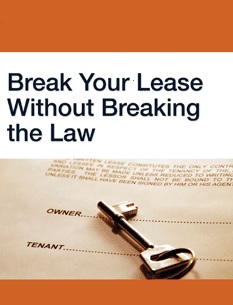
Amid a recent round of layoffs at the mid-level firm I’m employed at, it was brought to my attention that, among those who were laid off, the overwhelming majority did not bring business into the firm. This led me to understand the concept that there are only two types of lawyers, as John Remsen Jr put it, “there are lawyers with clients, and there are lawyers who work for lawyers with clients.” I found myself wondering how not to be the latter, how to bring in clients and increase professional marketability as a junior associate. I soon discovered, like anything else in life, it requires a bit of hard work and persistence.
Volunteer to Author Your Firms Legal Blog
First and foremost, my personal advice is to learn the coveted art of blogging. Clearly I’m a bit biased, however most law firms, from big to small, have begun to recognize the added benefit of maintaining a legal blog. Studies continuously show that that daily blog updates brings in new clients. If you can establish yourself as a leader in your firm’s blogging and networking in the legal community, you’ll set yourself apart from other associates waiting for work to be handed to them. Offer to author several blogs for your firms’ website, and if your firm doesn’t maintain a blog then you have a surefire way of drumming up some work that you’ll have creative control over.
Specialize in a Niche Practice Area
Next, when it comes to bringing in clients as a junior associate, drill down on a specific practice area you have a passion for. Specializing in a niche area of law can only improve your upward mobility in an emerging field. Start by staying on top of current events, new laws and particular niches within your practice area. By accurately conveying novel legal nuances in your practice area you’ll establish yourself as an emerging expert. You’ll find yourself being that go-to associate for partners involved in your area of interest. They say that reading one hour per day in your chosen field will make you an international expert in just 7 years. Just think what you can achieve by dedicating time to an area you’re already passionate about.

Dress to Impress and for Success
Seriously, dress the way you would visualize a well-polished attorney dressing. No matter what, humans are visual beings and how you present yourself will go a long way in establishing credibility. As Mr. Remsen pointed out, “very few clients will fault you because you look too nice. Dressing in a suit for work or meetings sends a message of ultimate respect and that you are serious about your business. Your presentation and ‘packaging’ sets a tone.” I’m often accused of being over-dressed at work or asked if I’m appearing in court, my response is usually “dress for the job you want, not the job you have,” followed by how “I’m gunning for the Solicitor General position!” Bottom line, you are your primary marketing platform so make sure you invest heavily in it! For more tips, read how “Lawyers Should Look Like Lawyers” here.

You Have to Network to Get-Work!
This is probably the most import segment on improving your marketability an improving your ability to bring in clients as a junior associate, so read carefully. Try to actively participate in your states bar association. Specifically, join the bar sections that encompass your practice area, offer to participate in CLE’s, attend meetings, and work towards leadership positions. The Remsen Group suggests becoming board certified in your identified niche area if available in your state.
Create and maintain a networking list. You’ve heard it law school and you’re probably hearing it again in practice, you have to network to get-work! Business cards are meant to be distributed, not collect dust in the box they came in. Quite frankly, if you’re not going through boxes of business cards during your tenure at a firm, you’re doing it wrong! Of course we all want high-end clients who bring valuable business to our firms; however, chances are you’re not going to run into those types of clients at your local hole-in-the-wall pub. Simply put, you need to be where the money is! For example, I popped into an art gallery one evening with a friend to kill some time before another event. There was free wine and hors d’oeuvres so we stayed and was soon approached by a gentleman who introduced himself as the owner of the gallery and artist. A few glasses of wine and several stories later, we’d struck up a genuine affinity towards each others crafts. I would later discover this gentleman was one of the most premier real estate developers in the state! Though he is currently satisfied with the law firm he has, I make it a point to keep in contact, whether it be lunch or a quick phone call just in case. The point is, had we chose to go to Hooters to watch the game; the likelihood of meeting a high value possible client would have been significantly lowered. You have to cultivate great relationships that can potentially transform into great business opportunities. Keep in touch by sending birthday wishes or sharing relevant articles or best practices in the field they work in or connecting via social media.
The New York Bar association noted that, “by developing a book of business as an associate, you can increase your profile at [your] firm and get yourself noticed, while putting some extra money in the bank as well.” The bottom line is that if your firm doesn’t have the funds to sustain your salary then you’ll likely be the first out the door unless you bring in clients as an associate. My firm’s manager emphatically expressed how great the attorneys who got laid off were as people, but sharply distinguished them from other lawyers who brought in their own billing. It’s understandable that not everyone has an extrovert personality or the wherewithal to maintain interpersonal relationships, if so, start with these simple networking tips to overcome shyness.
So if you want to be the lawyer with clients as opposed to the associate waiting for a hand-out, coincide your firms overall success with your success. Make sure to find an area you’re passionate about while keeping your outwardly appearance fresh and clean and most importantly, don’t forget that you have to network-to-get-work!






